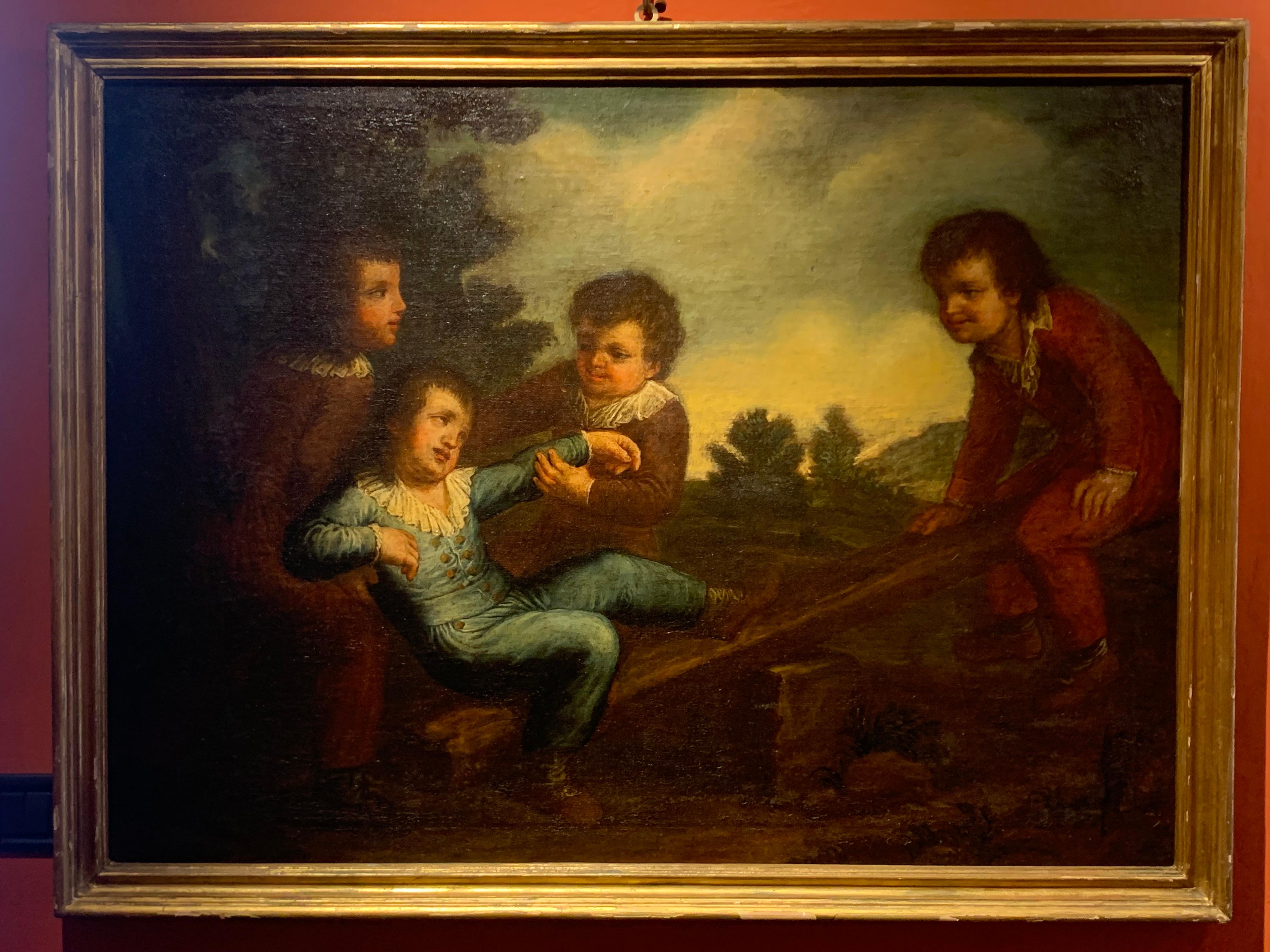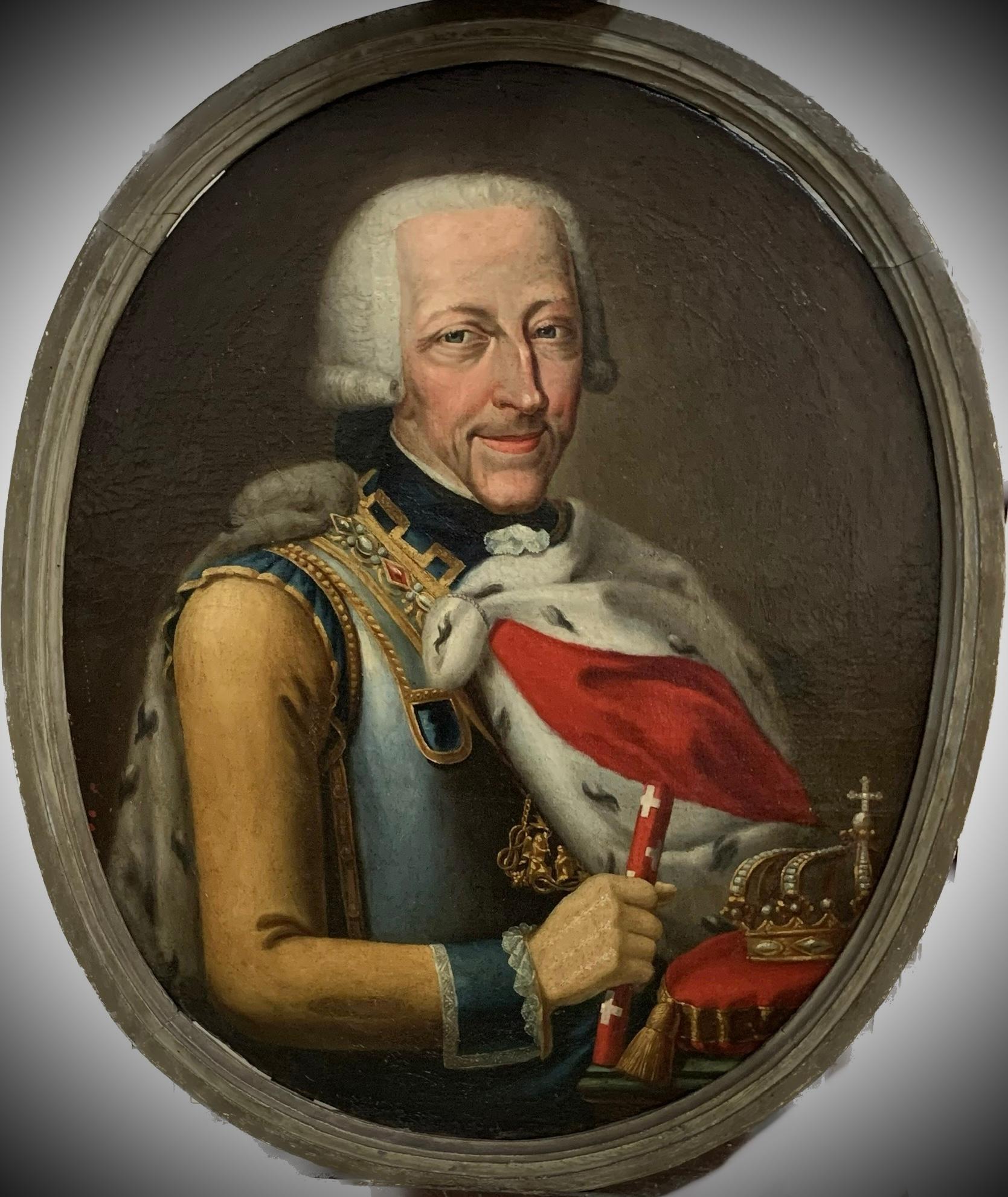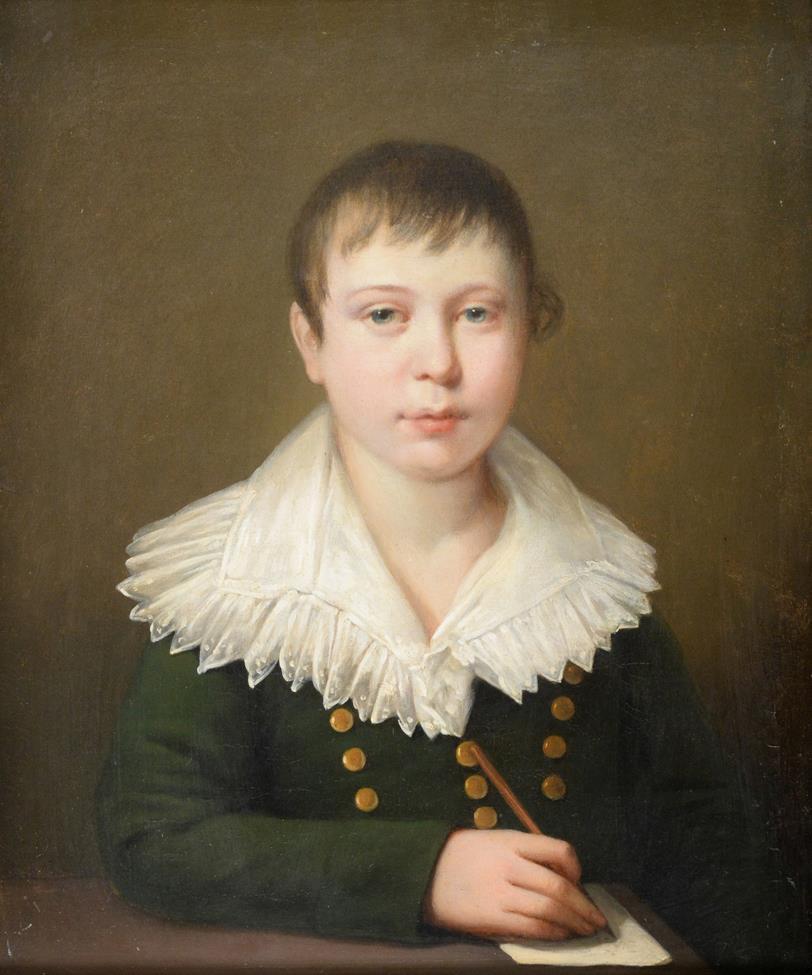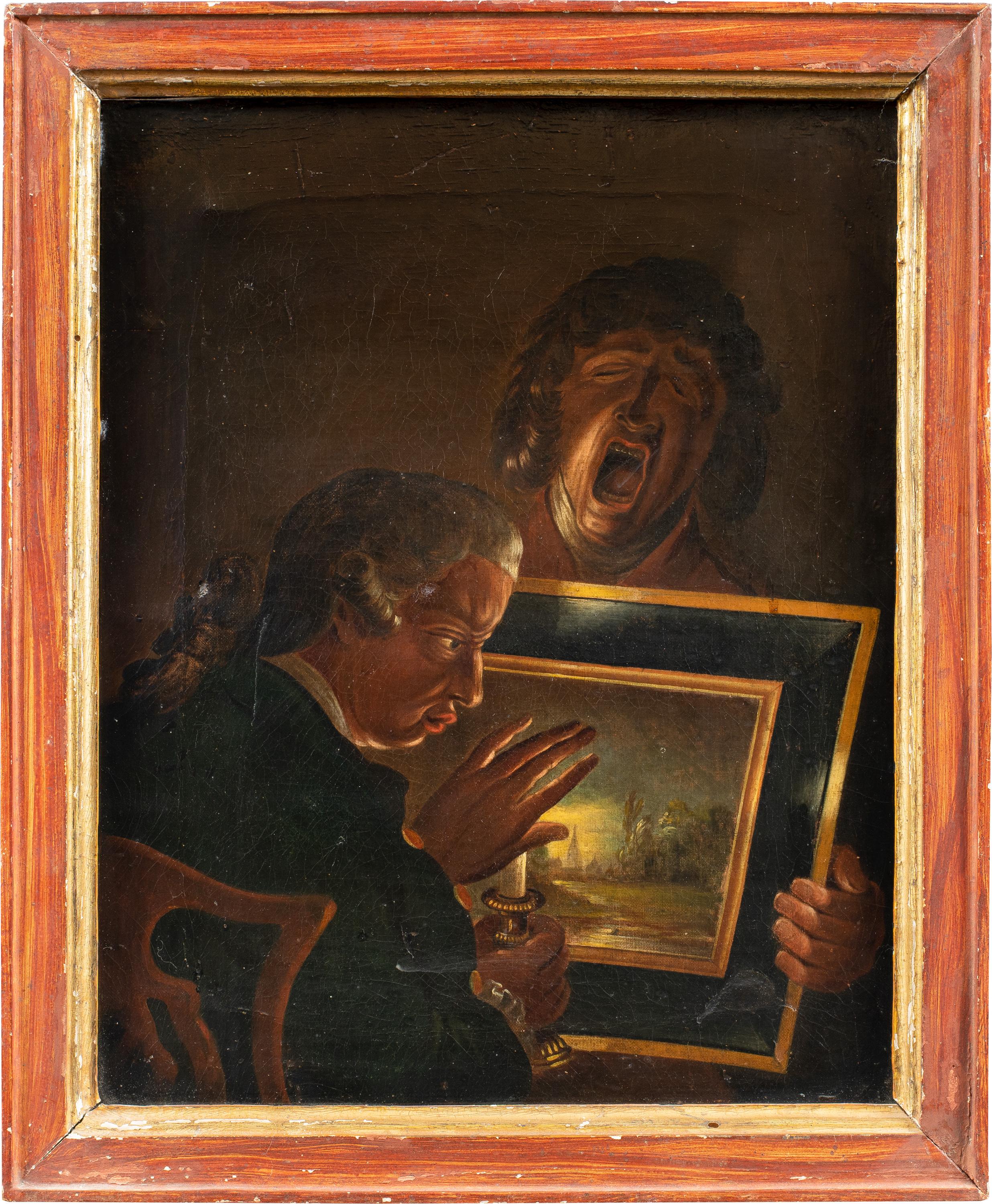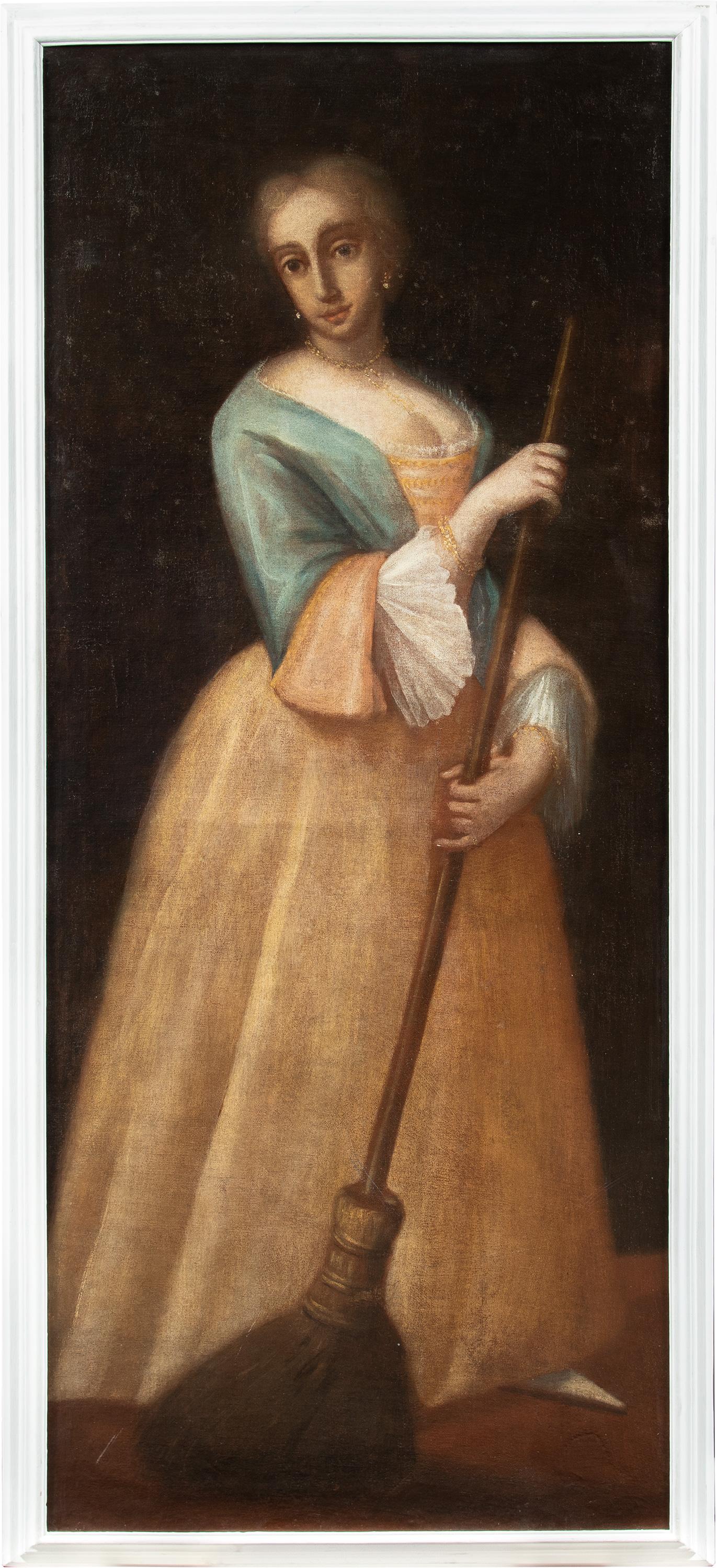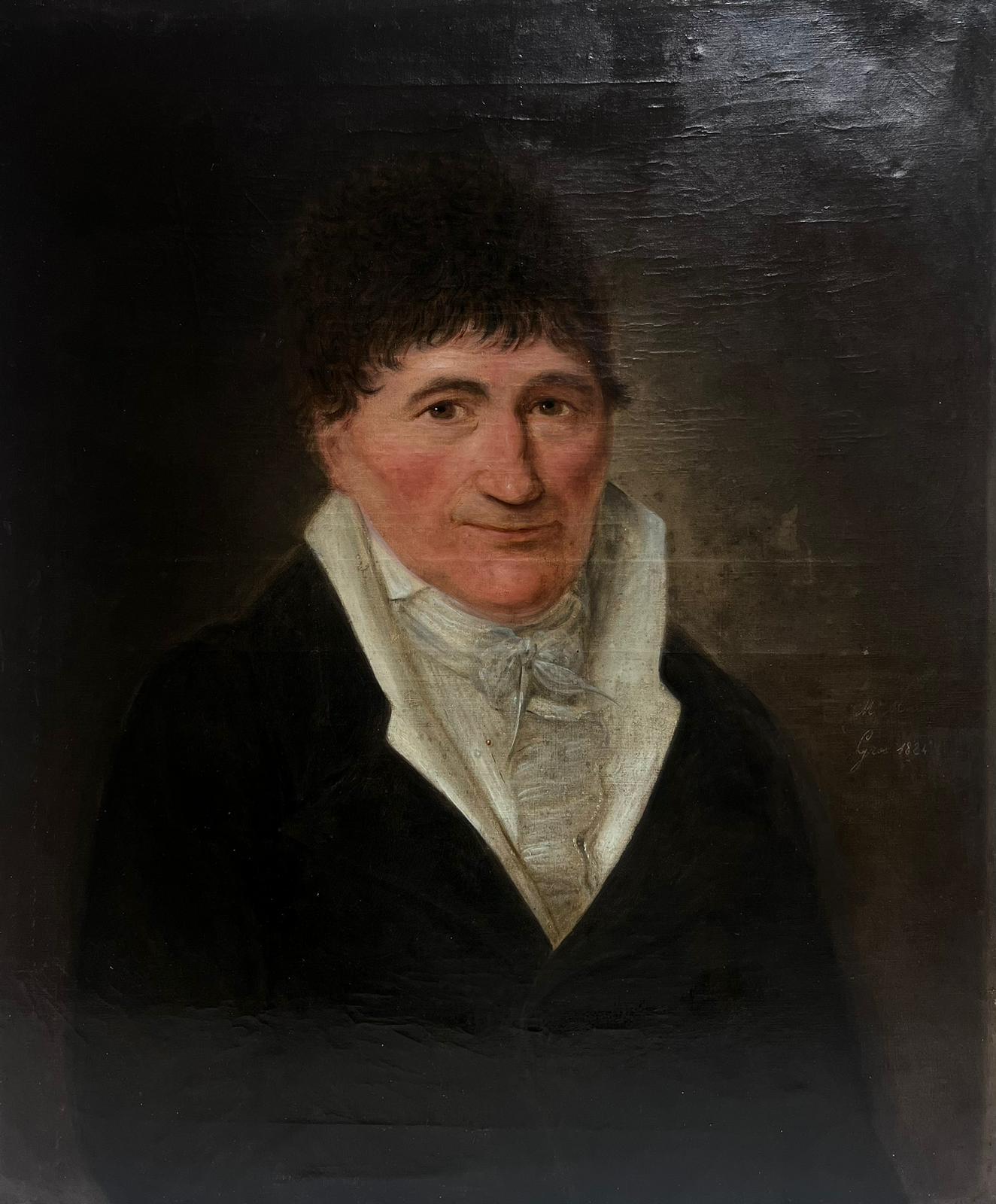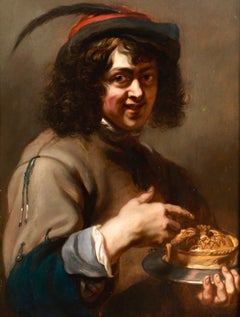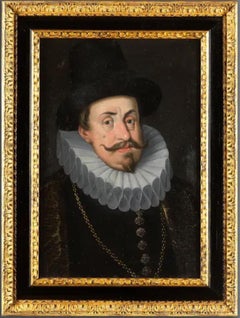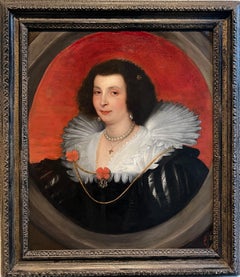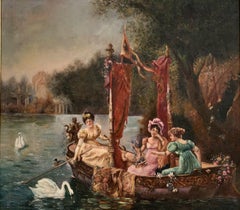
18th century Italian Baroque Portrait painting of a lady - fur pearls Venice
Want more images or videos?
Request additional images or videos from the seller
1 of 16
Sebastiano Ceccarini18th century Italian Baroque Portrait painting of a lady - fur pearls Venice
About the Item
- Creator:Sebastiano Ceccarini (1703 - 1783, Italian)
- Dimensions:Height: 29.53 in (75 cm)Width: 23.63 in (60 cm)
- Medium:
- Movement & Style:
- Period:
- Condition:Good and ready to hang. Some scattered restoration visible under uv-light. The antique frame is in good condition with some age-related wear.
- Gallery Location:Antwerp, BE
- Reference Number:1stDibs: LU142329669502
About the Seller
5.0
Platinum Seller
These expertly vetted sellers are 1stDibs' most experienced sellers and are rated highest by our customers.
Established in 2020
1stDibs seller since 2020
348 sales on 1stDibs
Typical response time: 1 hour
More From This SellerView All
- 17th century Flemish Old Master - A young boy enjoying a pie, allegory of tasteLocated in Antwerp, BE17th century Flemish old master painting, Allegory of taste The very fine painting depicts a young boy, cheekily tasting a delicious pie. He's looking at the viewer with eyes twinkl...Category
17th Century Old Masters Figurative Paintings
MaterialsCanvas, Oil
- 17th century old master portrait of Emperor Rudolph IILocated in Antwerp, BE"Portrait of Emperor Rudolph of Austria (1557-1619)" circle or studio of Josef Heinz the Elder Emperor Rudolph II, born in 1552, was a visionary ruler whose reign as the Holy Roman ...Category
17th Century Old Masters Portrait Paintings
MaterialsCanvas, Oil
- 17th century Portrait of Anna Maria de Camiudo - Royal Court 1630 SpainBy Anthony van DyckLocated in Antwerp, BE17th century old master Portrait painting of Anna Maria De Camiudo Anna Maria de Camiudo was a Spanish noblewoman and daughter of Don Pedro Velasques de Camiudo and Dona Maria de l...Category
17th Century Old Masters Portrait Paintings
MaterialsCanvas, Oil, Board
- 17th century Flemish Old master - Silenus feasting - Wine GodLocated in Antwerp, BE17th century old master painting "Silenus feasting", likely studio of Sir Anthony Van Dyck Born in Antwerp in 1599, Anthony Van Dyck entered the studio of Rubens (1577 - 1640) at the age of nineteen. Quickly, the master perceives the talents of the young prodigy and makes him his first assistant. Van Dyck, for his part, has a particular admiration for the man whose name is known throughout Europe. In 1619, he was inspired by a drunken Silenus by Rubens, produced one or two years earlier for a composition on the eponymous theme. This work, now in the Dresden Museum, appears to be the first version of our painting. That work has an illustrious provenance; it was recorded in the private collection of Leopold Wilhelm (Archduke of Austria) in 1662, in 1722 it was bought by the famous German painter Antoine Pesne for the King of Saxony in Dresden (Staatliche Kunstsammlungen Dresden - Gemäldegalerie Alte Meister, Dresden, inventory number 1017). From 1945 until 1955 it was on display at the Pushkin Museum in Moskou, after having been taken by Russia after the Second World War. It was then returned to the Staatliche Kunstsammlungen Dresden where it is still on display. Our painting is of a fine quality and has been painted by a skilled and confident hand. It displays some slight variations in the composition when compared to the original; the legs of Silenus are smoother and less hairy, more humanoid than satyresque. There might also be a pentimento visible at the level of the legs where one observes traces of hair on and under the material. This area can be compared to that of a canvas by Van Dyck kept in Brussels, of a still drunk Silenus whose animal legs are formally treated in the same way as the ones in our composition. Furthermore, the skirt of the figure to the far left has a purplish-red colour in our work, whereas in the first version it appears to be white. There also appear to be differences in the sky, firstly the clouds are shaped slightly different, the sky in our painting has a more vivid colour and there is also a golden hue of a sunset visible to the far left. This treatment of the background appears close to that of a Saint Rosalie, now kept at the Metropolitan Museum in New York and dated 1625, which might offer a reference for dating our painting. In the evanescent aspect, as non finito of its figures, it is interesting to compare our Silenus to a Saint Sebastian, conserved in the Escorial Museum in Madrid. Also, the theme remains rather curious. According to Barnes and Porter, Rubens, like Van Dyck after him, was partly inspired by Book XI of Ovid's Metamorphoses, but a second literary or pictorial source remains unknown (1). For the original composition, Stephan Maaser, art historian, establishes a correspondence between the position of Silenus, referring to that of a Christ at the moment of the Lamentation or the Descent from the Cross (2); the female characters on the left and the male on the right refer more to Mary Magdalene and Saint John than to the Phrygians or the members of a bacchanalian procession. Finally, note that Silenus is not usually a faun. The success of the composition at the time of its public reception and its engraving by Franciscus van der Steen really contributed to the dissemination of the work. At the same time, it testifies to the intense activity of the painter and his studio in Antwerp, before he left to work at the English court. About Silenus: In greek mythology, Silenus was the tutor and foster-father of the wine god Dionysos, who was entrusted to his care by Hermes after his birth from the thigh of Zeus. The young god was raised by Silenus and nursed by the Nysiad nymphs in a cave on Mount Nysa. Silenus was, in essence, the spirit of the treading dance of the wine-press, his name being derived from the words seiô, "to move to and fro," and lênos, "the wine-trough." Once, when Dionysos was travelling through Phrygia, Seilenos became lost and was captured by King Midas. The king treated him hospitably and as a reward Dionysos granted him his golden touch. The artists biography: Born in Antwerp on 22 March 1599, Anthony van Dyck was the seventh child of Frans van Dyck, a wealthy silk merchant, and Maria Cuypers, who was renowned for her embroidery skills. In 1609, when he was ten years old, his parents apprenticed the precocious youth to Hendrik van Balen (1575-1632), a painter of small cabinet pictures and dean of the city's Saint Luke's Guild. Although the length of Van Dyck's stay with Van Balen is not known, it probably lasted three to four years. Van Dyck registered as a master in the Antwerp Saint Luke's Guild on 11 February 1618, by which time he was already in demand as a portrait painter (see the NGA painting, Portrait of a Flemish Lady...Category
17th Century Old Masters Figurative Paintings
MaterialsOil, Canvas
- 18th century German portrait of a Princess Sofie Brunswick by a female masterLocated in Antwerp, BEImportant 18th century German portrait by the female master painter Anna Rosina de Gasc depicting Sophie of Brunswick-Wolfenbüttel Anna Rosina was born in 1713 into a family of painters of Polish noble origin in Berlin. Her mother was Maria Elizabeth Kahl from Pomerania. Her father, Georg Lisiewski (1674–1751), taught painting to Rosina and her siblings Anna Dorothea (1721–1782) and Christoph Friedrich (1725–1794). She later studied with the painter Antoine Pesne...Category
18th Century Romantic Portrait Paintings
MaterialsCanvas, Oil
- 18th century French Rococo Portrait painting of a noble lady - young ladyLocated in Antwerp, BE18th century French Rococo portrait of a young noble lady This cheerful young lady is looking at the spectator with a sparkling eyes has a cheeky smile on her face, almost as if she has just heard a funny story. She is very elegantly dressed, wearing a blue dress with embroidered silk sleeves. The bodice is adorned with a cream silk band which has been beautifully tied to a ribbon at the top, a tulle-lining completes the dress. Her hair is styled in an elaborate 18th century style and tied together with a blue and cream silk hairband. This portrait has been wonderfully painted, the artist not only beautifully depicted the fabrics, but also marvellously captured the happy nature of the sitter. The painting really has a soul, when one looks at it, it feels as if one is looking at a real person. It is very close to the works of Joseph-Siffred Duplessis (1725-1802) and it shares an uncanny resemblance to the portrait that he painted of the Comtesse de Provence, Princess of Savoie and wife of the King Louis XVIII of France. Duplessis is known to have reused many of his favoured compositions in different portraits, but he always applied slight differences, such as in the present painting. We believe that the present painting was created by someone from his very close circle. Joseph-Siffred Duplessis (1725-1802) was a renowned French portrait painter, famed for his intimately rendered portraits. After training for many years in Paris, Duplessis presented himself to the Académie in 1769 and was afforded the opportunity to exhibit regularly at the Salon. He was very successful and in 1777, he was allowed to paint a full-length portrait of Louis XVI (1754–1793) in his state robes. Two years later he created a portrait of Benjamin Franklin in a red coat with a fur collar, a painting which was the subject of much favorable comment. It was destined to become the artist’s most famous work and perhaps the best known image of the great American patriot...Category
18th Century Old Masters Portrait Paintings
MaterialsCanvas, Oil
You May Also Like
- Rococo painting with frame by 18th-century Venetian school oil on canvasLocated in Florence, ITThe painting (with a Salvador Rosa-style gilded frame 88 x 116 cm) depicts a group of four children who are playing outside on a swinging seesaw; we are probably dealing with a prank, as can be seen by the satisfied expression of the child on the right at the expense of the one in the foreground, who seems to be supported by the others, perhaps because of the fear felt. They are dressed in the same way, with black or brown ankle boots and a kind of double-breasted jumpsuit with a rich lace collar reminiscent of the jabots of dames, blue for the one in the foreground, brick-colored for the other three. Children also look alike in the hair, typical of the period, and features, suggesting a kinship relationship. We find the same subject, for example, in Johann Zoffany...Category
18th Century Rococo Portrait Paintings
MaterialsCanvas, Oil
- C. 1900 FRENCH BELLE EPOQUE HUGE OIL PAINTING - ELEGANT LADIES BOATING ON LAKELocated in Cirencester, Gloucestershire"Elegants on the Lake" French School, circa 1900 oil painting on canvas, framed painting: 89cm x 98cm framed: 101cm x 111cm Wonderfully decorative large French oil painting from th...Category
Early 20th Century Rococo Portrait Paintings
MaterialsCanvas, Oil
- Portrait of a Young Boy with BirdcageBy (Circle of) Jean Baptiste GreuzeLocated in London, GBCircle of Jean-Baptiste Greuze 1725 - 1805 Portrait of a Young Boy with Birdcage Oil on canvas Image size: 15½ x 12 inches Original frame J...Category
Mid-18th Century Rococo Portrait Paintings
MaterialsOil, Canvas
- Children w Lamb Scene 18th century Oil painting by French Rococo MasterBy Jean Baptist Marie HuetLocated in Stockholm, SEPainting was attributed to Jean-Baptiste Marie Huet (1745 - 1811) by Cabinet Turquin (France). A cute scene with children tying a ribbon around the neck of a young lamb. Rococo in th...Category
Late 18th Century Rococo Animal Paintings
MaterialsCanvas, Wood, Oil
- Ritratto del Re di Sardegna Vittorio Amedeo III di Savoia. Ambito di G. PanealboLocated in Firenze, ITRitratto del Re di Sardegna Vittorio Amedeo III di Savoia. Ambito di Giovanni Panelalbo. Ritratto di Vittorio Amedeo III di Savoia (Torino, 26 giugno 1726 – Moncalieri, 16 ottobre 1...Category
Late 18th Century Rococo Figurative Paintings
MaterialsOil, Canvas
$2,008 Sale Price38% OffFree Shipping - 18th century French figure painting - Portrait lady - Oil on canvas RococòLocated in Varmo, ITFrench painter (18th century) - Portrait of a lady. 43 x 35 cm without frame, 69 x 59 cm with frame. Oil on canvas, in carved and gilded wooden frame. - Inscription on the back. ...Category
Mid-18th Century Rococo Figurative Paintings
MaterialsCanvas, Oil
$2,192 Sale Price20% OffFree Shipping
